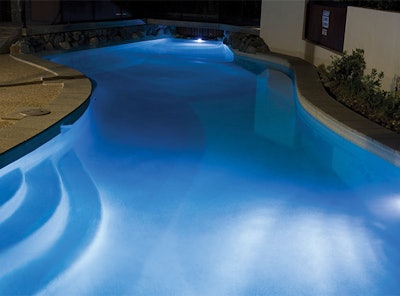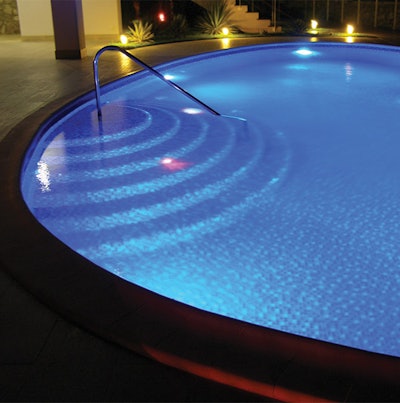
Twelve months ago, a lot of pool and spa people were thinking 2020 would be a tough one. Turned out they were right, just not in the way they figured.
"I thought, 'This is going to be a horrible year because everybody was supposed to be broke,'" says Nicole Macias, owner, Garden of Eden Pools and Outdoor Living Spaces out of South Texas. "Nope. Everybody was stuck at home. Kids were driving them crazy. They wanted pools."
With the rush of applications for construction and renovation permits came the sudden realization that orders for equipment and raw materials, uncharacteristically, were beginning to lag and prices were going up.
"It didn't start off so bad," she says, "but by the time we got to the summer, it was hard to get stuff. Sometimes we would try to buy different brands of equipment just to be able to finish things off, but that didn't help. You couldn't get those brands either.
"We started trying to stockpile, but then manufacturers started limiting because everyone else was trying to stockpile, too. Especially with the chemicals, like chlorine tablets, for example, those were really hard to find for a while. They limited us to two buckets per visit and doubled the price."
With some industries shutting down due to COVID restrictions, a booming pool industry seemed like an attractive option for free-wheeling entrepreneurs in the area. More than usual, even. "Around here, you get a lot of people that just decide one day that they want to be pool builders. That got a lot worse last summer because it was so busy," says Macias. That only added to the squeeze, she says.
Stories like hers were playing out in other parts of the country. Supplies were a little more plentiful in Duluth, Ga., where Chattahoochee Pools and Spas builds and renovates backyard oases, says Owner Whit Hamilton. Still, he applied the same strategies.
RELATED: Avoiding Electrical Missteps
"We bought ahead, stockpiled a bit in October, November last year, just to make sure that we wouldn't get into a bind, and thankfully, we did well enough financially that it wasn't a hardship to do that. But just purely from the standpoint of somebody that's been doing this for about 45 years now, I feel like if I've got to play distributor, then let me pay distributor prices and buy direct."
So far in 2021, logistics seem to be improving, he adds. "It has gotten a little better. There are still some things that sometimes are hard to get. Like, for example, right now we were having issues getting the filters that we need, but they're coming faster than they were last summer. So now, we'll get them in maybe a week or two, compared to having to wait about a month."

SIMPLE AESTHETICS
Throughout the unique and challenging 12-month period that has just passed, both Macias and Hamilton were offering pool lighting upgrades, usually as part of a larger project. The scene played out everywhere in the world: A builder standing in the backyard with an anxious homeowner, gesturing toward the scarred plaster, the sagging deck and that big white headlight under the diving board staring like a cyclops into the blinding depths.
With her experience, Macias often led the discussion toward color-changing LEDs. They already know that an LED upgrade would save some money on their electricity bill, she says, "but mostly, it's about the aesthetics. They like the way the color-changing LEDs look."
Often the interest in LEDs starts with something the customer has already seen somewhere, says Hamilton. "That guy who's had a pool for 20 years goes over to see his neighbor's new pool, and the new one has lights that change colors and do different things. Well, now he wants that for his old pool."
The good news is that lighting technology is advancing to make that retrofit, renovation lighting easier.
EASIER AND FASTER
For most of modern pool history, pool lights have been installed by running underground conduit from an electrical power source to a niche cut into the wall of the pool. It takes no understanding of pools or lights or conduit or current to realize that this setup could cause a few problems. You're piercing the side of a water-filled vessel to create a niche that will receive electricity. Inside that niche, you've got a wire connection that runs off through conduit into subsoil that will shift and settle and apply shear force over time.
Unsurprisingly, pool light niches are a popular place for leaks to start, and from there, water wants to drip into the conduit and perhaps begin a journey toward the power source (if it's not raised above the level of the pool like it's supposed to be). Inside the niche, there's a seal that's supposed to prevent water from leaking into conduit, but if you ask anybody who works on these for a living, they'll tell you that in older pools, that seal has often failed or may not even be there at all. Or maybe it's been the recipient of a half-hearted repair. Or maybe it's been repaired with large doses of epoxy in such a way to guarantee the defeat of anyone who ever wants to fix it again.
RELATED: Brightening The Fiberstars
These are the situations that may be faced by a pool professional from a renovation company trying to remove an old 120-volt headlight so it can be upgraded to LED. Often, one of the most troublesome tasks is getting that light cord out, says Hamilton.
"To take the old light out, you've got to remove the light from the niche, pull the wire out of that conduit and inspect it, and after everything that conduit has been through over the years, sometimes that wire does not want to come out. We've seen cases where you couldn't do it at all because there are collapsed concrete areas or collapsed conduits underneath pool decks, and you just can't get the cord out," he says.
Problems like this can make the cost of the job difficult to predict up front. Most of Hamiltons' customers understand: "When we tell a customer we've got to change your light and the fixture, we figure an hour to pull that light and cord out and put the new one in. And we've given them a dollar figure we're charging them, but we tell them, 'You know, this is based on expecting an hour to pull that light out. But we may run into some problems where it's been epoxied, or the conduit is broken, or whatever. And we've seen cases where you couldn't pull the light out at all.' But we leave it open-ended and say, 'You know, this could turn into a $300 job, or we might get lucky, and we might get away with it only being $70. We're just going to go at it, start the timer, and see where it ends.'
"You have to make people aware of the possibilities up front. We tell them, 'We've been doing this for a long time. We've had them go smooth as silk, and we've had them where it doesn't even happen at all. You're going to fall somewhere in between. And we'll tell you where that is once we get into it.'
"Most people are receptive to that, they understand. When they see your guy out there in the summertime, and he's got both feet pressed up against the wall, and he's red in the face trying to pull on a light that won't move, they understand."

NEW TECHNOLOGIES
All of that to say, Hamilton really appreciates the new technologies of lighting that enable an easy replacement at the niche. Hamilton uses the Retro Light from Spa Electrics, which he says is designed to help ease installation. "So this new technology of lighting where the cord stays in the conduit, that's a big help," he says. "With these newer lights, you can actually just take a couple of screws out and remove the fixture. The core stays intact, and you screw a new fixture to it, and you're back in business."
"The whole installation is far improved over what it used to be in terms of installation, and the fact that it's 12 volts adds an extra bit of safety over the old 110s," Hamilton says.
Those feelings are echoed by Macias, whose company uses the induction technology Modlite from S.R. Smith, meaning there's a wireless connection within the pool niche between the light and the power source, making removal and replacement much easier. It simply screws on and off like the cap on a gallon of milk.
"You still need the light niche, but you don't have to fish the line through the conduit, which was a pain," she says. "We just started using them this year. To replace it, you just pull the front of the light off and replace it with a new one."
RELATED: Lighting And Aquatic Features Go Hand In Hand
There are a lot of different lights on the market and different situations, so it's not always straightforward, she adds. "A lot depends on what they had there originally. Sometimes you have no choice but to go and replace what they already had, like for like, because of the size or the way it's wired.
"So if somebody has one of those big pool lights, it's easy enough to replace that. But if they want to switch it over to a few of the small LEDs, then that's going to require a bigger renovation job. Because after you create those new light niches around the pool, and after you've changed the size of the hole from a big one for the old headlight to a small one for your LED, you have to replaster the pool. So it can change the whole scope of the job."
SUMMER BOOKINGS
Both Macias and Hamilton are gearing up for a big season in 2021, which, given their southern locations, should be starting sometime in March.
"I don't see it slowing down this year," Hamilton says, "or certainly the first half. We're booked pretty far ahead, and could be further if I was really working at it.
"And we expect the lighting upgrade side of things to keep going strong. Consumers know there's now a creative aspect of lighting your pool, with changing colors, and the LED lowers your power consumption, lasts longer, and it runs on 12-volt. These are certainly all nice features for the homeowners."
This article first appeared in the March 2021 issue of AQUA Magazine — the top resource for retailers, builders and service pros in the pool and spa industry. Subscriptions to the print magazine are free to all industry professionals. Click here to subscribe.












































